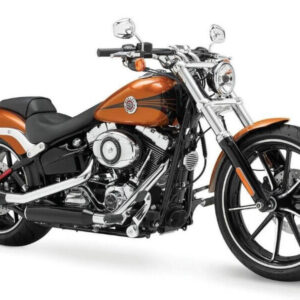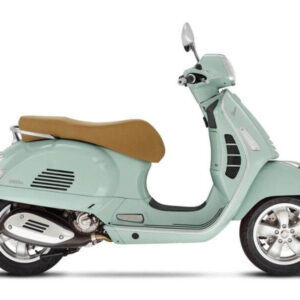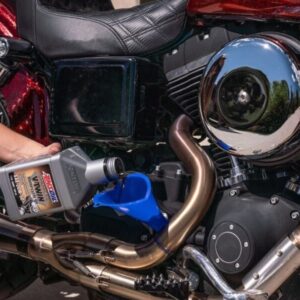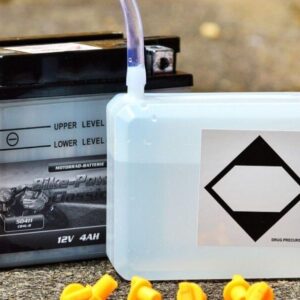What is an AGM battery? The usage of the AGM battery started as early as 1980s and was first applied to military aircraft. Over the years, with given advantages, the battery has found its ways in a wider range of applications and gained surprising success. It is now not only a hot choice for vehicles, but also in the field of solar energy storage, due to its unique design.
What is an AGM battery?
The AGM battery is a sealed lead acid battery (also known as a Valve Regulated Lead Acid or VRLA battery).
AGM is short for Absorbent Glass Mat, which refers to the battery technology used. Developed in the early 80s, absorbed glass mat AGM batteries were first applied to military aircraft and designed as an alternative to NiCad (NiCd) batteries which were very costly.
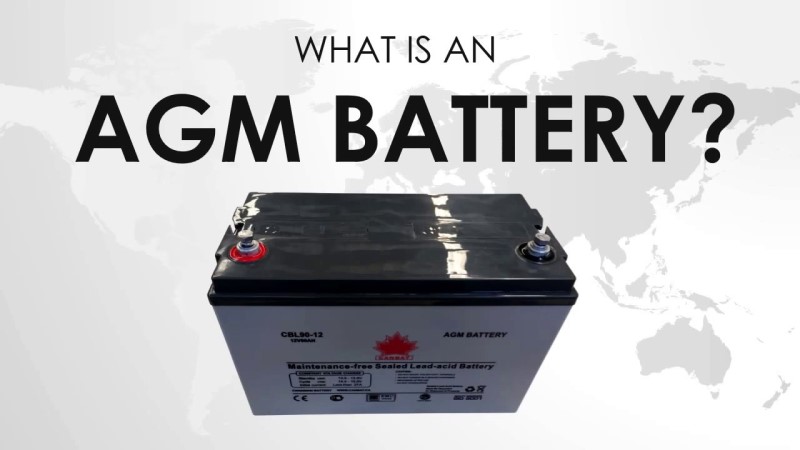
Today, you’ll find this deep cycle AGM battery in all demanding applications — from marine to aviation, emergency lighting, and even off-grid power systems like wind and solar. An absorbed glass mat battery is also well-suited to advanced cars with start-stop technology and significant power demands.
AGM batteries are especially known for their high reserve capacity, which allows them to provide a steady power supply for longer durations.
Owing to these inherent benefits and uses of AGM batteries, the AGM battery market value is set to grow by almost $18 billion from 2022 to 2032 at a 4.8% CAGR. Eminent global AGM battery market players include Clarios, Power Sonic Corporation, Crown Battery, Exide Technologies, C&D Technologies, and East Penn Manufacturing Company.
How do AGM batteries work?
This part involves a little bit of technical knowledge, but it does help understand how Absorbent Glass Mat (AGM) technology influences the performance of a battery.
The AGM battery technology features a high discharge rate and a wide operation temperature range. The AGM battery meaning reliable, long-lasting, and highly efficient; due to the encased structure and the absorbent glass mat that contains the electrolyte.
The absorbent glass mat is also called AGM separator. Being ultra-thin, it is sandwiched between positive and negative lead plates, and saturated in the electrolyte. Besides, its most important function is soaking up the electrolyte and keeping the fluid in a motionless form.
As a result, it maximizes the reaction surface between the electrolyte and the battery plates, which greatly enhances the charging and discharging efficiency. The encased structure also rends AGM batteries uniqueness in maintenance and transportation.
What’s the difference? AGM vs Standard Batteries
AGM car batteries have unbeatable advantages over standard batteries. This might sound like marketing hype.
Instead, it’s just science.
Specifically, the fiberglass mesh mats. They are the GM in AGM batteries. Ultra-thin glass fibers soak up all the electrolyte (water and sulfuric acid) into thin pillows cushioning the lead plates. Instead of the free-flowing liquid inside of a regular car battery, an AGM battery carries its electrical charge in soaked sponges — and those mesh sponges are coating the lead plates.
The fiberglass mesh on the lead plates gives the electrical current a shorter, easier path to follow than in a regular battery with free-flowing liquid.
That’s called low internal resistance, and that’s how an AGM battery’s design that expand what car batteries can fundamentally do.
In power, speed, long life and durability, the AGM battery has standard batteries beat.
AGM batteries have more engine starts than standard batteries.
Generally, an AGM battery can start your engine more than 60,000 times. That’s more than three times the starts you’ll get out of a standard battery.
If you drive an auto start stop vehicle, you need those extra engine starts.
With a normal engine, you might start your car three or four times a day, assuming you drive to work and get a few errands done afterward.
An auto start stop car might need three or four starts on one morning drive, depending on how many traffic lights you hit. No matter how well you keep it charged, a regular car battery cannot keep up with an auto start stop engine.
Also, every time the engine cuts off, the AGM battery steps in to run your air conditioning, fuel sensor, transmission, radio and all the other electronics that keep your car running smoothly.
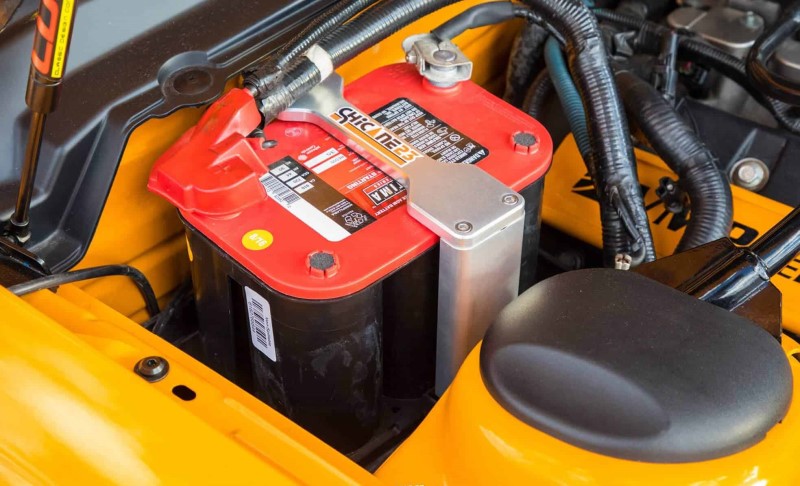
Even a car without auto start stop can strain its car battery because of all the electronics onboard. With collision sensors, fuel sensors and air conditioning to run, an alternator has fewer amps to give your car battery.
Unless you’re traveling at highway speeds, recharging your car battery isn’t a priority for your alternator. In that case, a regular car battery might go for a while between recharges, and that’s not good for it.
On the other hand, an AGM battery can drain deeply and still crank engines.
AGM batteries make great deep cycle batteries.
Backup cameras, Bluetooth connections and other electronics will drain deep cycle AGM batteries in a way standard car batteries can’t handle. Standard lead-acid batteries used to fit the bill for cars because they can throw a lot of electricity into a starter in a short powerful burst. Then they need to recharge to 100% or else they start to die.
Draining a battery to 50% or so before recharging it is called deep cycling. Plain, flooded car batteries can’t deep cycle like AGM batteries. That’s why you might need to jump a car if you leave your headlights on for a couple hours with the engine off.
AGM batteries, on the other hand, can deliver a steady stream of amps and still give a big burst of power to start an engine. You can drain an AGM with all the electronics your car has and still expect it to crank the engine. The tight fiberglass mat design lets these batteries work well at partial discharge rates.
That’s why boat and RV owners use an AGM battery. It may be several hours before you get back to the dock, or tonight’s campground might not have a shore power hookup.
RVs and boats tend to use two types of batteries: one for starting engines and motors and one to power their electronics. AGMs can do both. RVs and boats need power for fish finders, food storage, cooking equipment, sound and entertainment systems and more.
Instead of carrying two batteries, one for starting and one for deep cycling, owners of RVs and boats sometimes turn to a deep cycle AGM battery that can also start motors.
AGM batteries recharge faster than regular batteries.
Fiberglass mesh mats soaked in electrolyte carry current faster than liquid electrolyte. Yes, that’s how AGM batteries can deliver big bursts of power even if they’re drained. It’s also how AGM batteries recharge faster than regular batteries. That low internal resistance means AGM batteries can give more amps and accept more amps when they recharge.
Standard batteries need more voltage than AGM batteries to recharge because regular batteries have higher internal resistance. To keep them from overheating, they can only take a few amps at a time at that high voltage.
This means AGM batteries need a special AGM charger. They can take a lot of amps in a short period of time — but an AGM battery charger must keep its voltage lower than 14 volts to avoid ruining the AGM battery. AGM batteries are 12 volts, like all car batteries, and can handle some higher voltage, but only up to a certain point.
If a car alternator charges an AGM battery with a voltage higher than 15 volts, it can damage an AGM. It’s not likely, but voltage fluctuations are a possibility.
AGM batteries have special valves that protect their service lifespans.
AGM batteries also have valves regulating the hydrogen and oxygen allowed to escape during charging. They fall under a broader category of valve-regulated, lead-acid (VRLA) batteries, also called maintenance free. If you’ve never thought much about maintaining your car battery, it might be thanks to this special one-way valve that essentially keeps evaporated water from leaving the battery case.
This little trick is one secret to an AGM’s long life.
The battery’s fundamental chemistry is still based on lead, sulfuric acid and water. When you draw power, the acid molecules move to the lead plates, leaving water and lead sulfate — and sending an electrical charge out of the positive post.
Removing the sulfuric acid from the solution creates a chemical reaction between the paste on the plates. Recharging a battery works in reverse: Electricity goes in, making the liquid more acidic.
However, there’s always a chance some water loss can happen when electricity splits H2O into hydrogen and oxygen gases. Losing those water molecules means the electrolyte stays more acidic than usual — cutting into the potential strength of the chemical reaction on the plates, and ultimately shortening the lifespan. The AGM’s valve stops those gases from leaving.
Except if you overcharge it. A regular battery charger can kill an AGM battery.
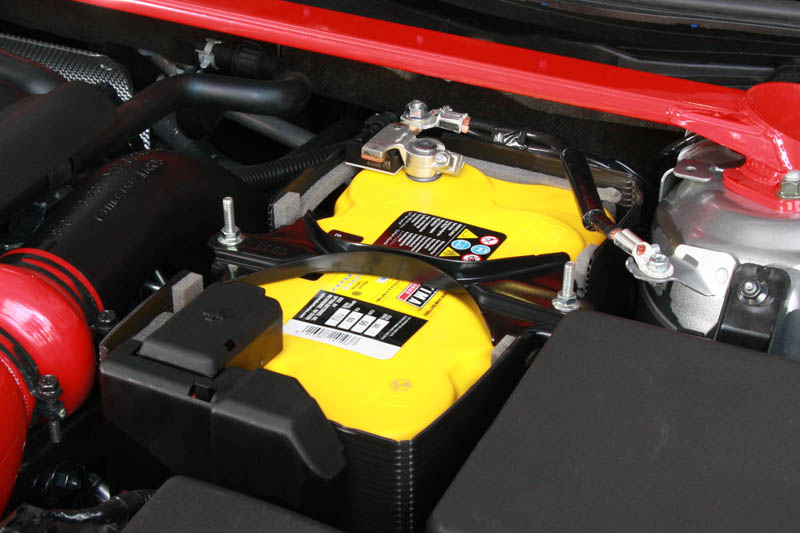
If you use a standard battery charger for an AGM battery, the high-voltage current must pass through anything it can. That means breaking up more water molecules and building up too much gas inside. Too much gas trips the safety valve. That releases some gas, reducing pressure. However, if you keep charging it with high voltage, too much gas and pressure will pop that valve out or break the case’s seal.
Without a seal to keep the water in, your AGM battery will dry out fast. Only use AGM chargers on an AGM battery.
AGM batteries can resist damage from extreme temps and vibration
The absorbed mats give AGM batteries a sponge-like resistance to vibrations. A regular car battery’s sensitive internal components can break apart if you shake it hard enough. Its lead plates are hanging from a sturdy metal in liquid. Even if you don’t break the plastic case, it’s common for car batteries to die if you rattle them hard enough.
What you might not expect is how the AGM battery’s fiberglass mats and special valve also protect its performance in extreme weather.
Heat weakens car batteries by evaporating the water out of them. The more fully charged a battery is, the more acidic its liquid, the harder it is for water to evaporate out of it.
However, an AGM battery’s fiberglass mesh keeps that water trapped because it’s packed so tightly to the lead plates. On top of that, the sealed design holds the water vapor in, and only if you overcharge it will a molecules of water vapor escape.
At the other end of the thermometer, the story is even better.
Cold suppresses a car battery’s performance, forcing a car battery to work twice as hard to generate cranking amps. Because the fiberglass mats are tightly packed on the lead plates, an AGM battery can generate a lot of amps without facing a lot of resistance. Even if the cold slows down chemical reactions, an AGM has amps to spare.
An AGM battery’s sealed, spillproof design allows them to pass the specific transportation regulations. You can ship them by air, deliver them by mail, etc. It might be odd to think of spilling a car battery, but you should understand that standard car batteries are not as durable as AA batteries.
They’re more like a full cup of water with a sippy cup lid. If you turn it over, it spills or leaks. AGM batteries are more like sealed soda cans. You can transport them (gently, please), and they won’t spill.
Advantages of AGM batteries
AGM technology batteries feature a host of benefits.
Longer Battery Life
An AGM battery has a longer lifespan than a conventional battery (lead acid battery) — lasting up to 2x longer. These batteries also have a very low self-discharge rate, so they last longer when not in active use.
Generates More Starts
AGM batteries have the power to start a car engine more than 60,000 times. That’s about 3x more than what traditional batteries can do.
Lighter and More Durable
The AGM separator isn’t completely saturated with electrolyte, and the liquid doesn’t expand the way they do in a traditional lead acid battery.
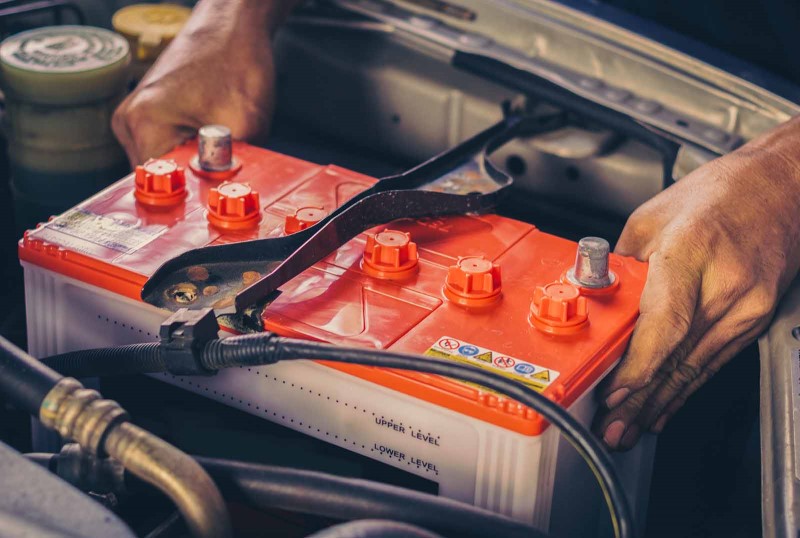
Less electrolyte (compared to a traditional flooded battery) means decreased weight. No liquid expansion means the AGM battery can also withstand freezing. And while you likely won’t get any power from a frozen battery, it won’t crack or damage the plates either.
Low Internal Resistance Means Higher Power Output
The AGM battery has a very low internal resistance, allowing it to deliver power quickly. This is an essential function of a car battery, which pushes rapid bursts of power to start the engine.
Faster Recharge and Better Depth of Discharge
AGM batteries have excellent charge acceptance, which can extend their cycle life. The AGM battery can charge up to 5x faster compared to traditional batteries.
They also have an 80% Depth of Discharge (DoD) — meaning they can discharge down to 80% of their original capacity without damage. A conventional lead acid battery can typically discharge down to only 50% DoD.
The AGM battery’s deep discharge capability also allows it to adapt well to a deep cycle application. As a result, AGM technology is often applied to the deep cycle battery format. You’ll find the deep cycle AGM battery in marine vehicles or UPS backup systems.
Vibration and Shock Resistant
The electrolyte-soaked glass mats in between the lead plates act like a damper. As the plates are packed fairly tightly, movement and vibrations are reduced to almost zero. This creates a battery that’s highly resistant to vibration and shock.
Non-Spillable and Maintenance-Free
The AGM battery is maintenance-free and doesn’t require any watering service like a traditional wet cell battery. The absorbent glass mat between the plates holds the electrolyte in place, keeping it from spilling even when the battery is in odd positions. This allows for greater mounting flexibility.
Additionally, because the AGM battery is spill-proof, regulations are generally more relaxed about transporting them by air or road. That said, it’s best to follow the handling instructions given in the battery safety data sheets.
Disadvantages of AGM batteries
Here are two common drawbacks of using AGM batteries:
Sensitive to Overcharging
The AGM battery has a lower tolerance to overcharging and high voltages when compared to a flooded cell battery.
More Costly
AGM batteries are more expensive than traditional batteries as they cost more to manufacture. On average, a conventional battery costs $65-$130, but an AGM can be over $200.
How long does an AGM battery last?
For start-stop applications, AGM batteries can generally last six to eight years.
The durability for storage purposes depends on the operating temperature and the depth of discharge (DoD) – which refers to the available capacity of batteries when they are fully topped off. Another thing to consider that can affect the lifetime would be the battery performance, which can deteriorate over time.
FAQs
Are AGM and gel batteries the same?
The AGM and the gel battery are often mistaken to be the same because they’re both “dry cell” lead acid batteries. And while the gel cell is also a VRLA battery, it holds its electrolyte solution very differently.
Where the AGM battery uses an absorbent glass mat, the gel cell battery uses a chemical agent (like silica) to suspend the electrolyte in a gel form. The gel restricts movement, so the battery becomes spill-proof.
Gel batteries don’t do as well as the AGM as a starter battery, so you’re less likely to find them performing that function in cars.
Are AGM batteries deep cycle?
AGM technology is used in both deep cycle and starter battery application.
“Deep cycle” is defined by plate thickness and not the battery technology, so an AGM deep cycle battery is used as often as a flooded or gel cell deep cycle battery.
Which is better, AGM or EFB battery?
Both EFB and AGM batteries are advanced batteries.
An EFB battery (Enhanced Flooded Battery) is ideal for small- or mid-range vehicles with start-stop technology, while AGMs are best suited for deep cycle applications and high-powered, heavy duty vehicles like electric cars and trucks.
Above is information about What is an AGM battery? that we have compiled. Hopefully, through the above content, you have a more detailed understanding of How do AGM batteries work? Thank you for reading our post.

